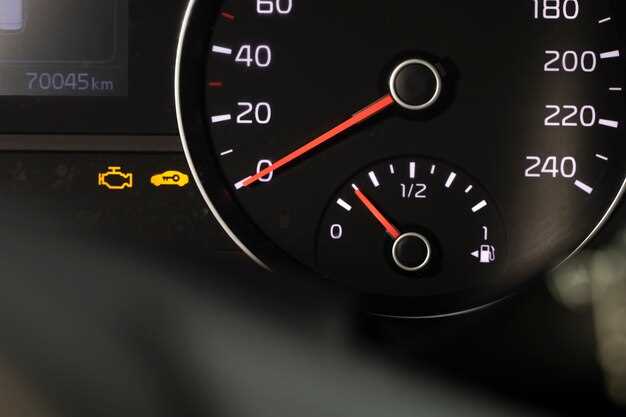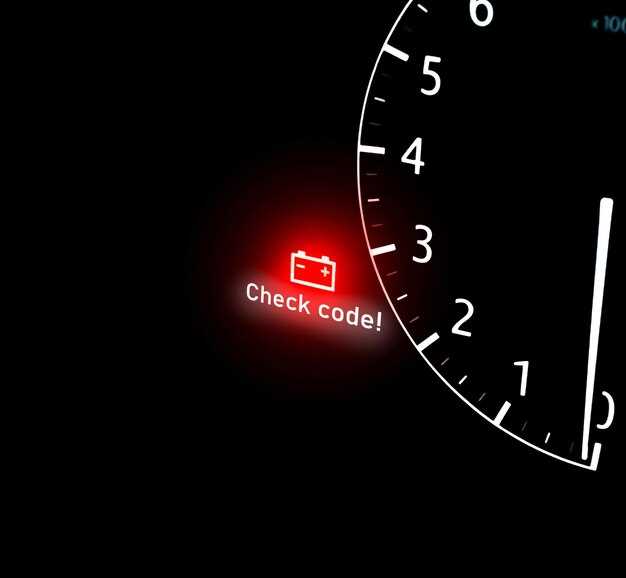
Top 10 car warning lights and their meanings
- Dominique Kaye
- 0
- Posted on

Cars are equipped with various warning lights on the dashboard to alert drivers about potential issues. These lights serve as an essential communication tool between the vehicle and the driver, providing insights into the car’s health and performance. Understanding these indicators can mean the difference between a minor inconvenience and a major repair.
In this article, we will explore 10 of the most common car warning lights that you might encounter on your dashboard. We will delve into what each light signifies, why it is important, and what actions should be taken when encountering these signals. By familiarizing yourself with these lights, you can ensure a safer and more efficient driving experience.
Identifying Engine Warning Lights and What They Indicate
Engine warning lights are critical indicators that alert drivers to potential issues within the vehicle’s engine system. Recognizing these lights can prevent severe engine damage and costly repairs. Here are some common engine warning lights and their meanings:
Check Engine Light: This is one of the most recognized warning lights. It may indicate a range of issues, including problems with the ignition system, fuel system, or even the exhaust system. A diagnostic scan is necessary to determine the precise cause.
Oil Pressure Warning Light: If this light illuminates, it signifies either low oil pressure or low oil level. Continuing to drive with this warning can lead to severe engine damage due to insufficient lubrication.
Temperature Warning Light: This light indicates that the engine is overheating. It is crucial to address this issue promptly to prevent potential engine failure. Check coolant levels and monitor for leaks if this light appears.
Battery Warning Light: When the battery light turns on, it suggests an issue with the vehicle’s electrical system, such as a failing battery or alternator. This requires immediate attention to avoid being stranded due to power loss.
Brake Warning Light: While predominantly associated with braking systems, this light may also indicate engine issues, particularly with the braking system’s interaction with the engine control module. Understanding the context is essential.
Emissions Control Light: This light signals that there may be a problem with the vehicle’s emissions system. Ignoring it can result in decreased fuel efficiency and potential fines for failing to meet emissions standards.
Fuel Filter Warning Light: This light alerts drivers to a potentially clogged fuel filter, which can cause performance issues. Addressing the filter promptly ensures optimal engine function.
In summary, being aware of engine warning lights can help drivers identify and respond to problems early. Regular vehicle maintenance and prompt attention to warning lights contribute to a safer driving experience.
Decoding Dashboard Symbols for Fluid Levels and Maintenance Alerts

Understanding your car’s dashboard symbols is crucial for maintaining vehicle health. Among these symbols, warning lights specifically related to fluid levels and maintenance alerts play a vital role in preventing potential damage.
The coolant temperature warning light signifies that the engine may be overheating. It’s essential to check your coolant level immediately if this light illuminates, as prolonged overheating can lead to engine failure.
The oil pressure warning light indicates that the oil pressure is low. This could mean that the engine oil is too low or that there is a problem with the oil pump. Ignoring this warning can result in serious engine damage, so it’s advisable to check oil levels promptly.
Brake fluid warning lights signal that the brake fluid level is low or that there may be a malfunction in the braking system. This is a critical alert and requires immediate attention to ensure your safety on the road.
The tire pressure warning light alerts drivers to inadequate tire pressure. Proper tire inflation is essential not only for safety but also for optimal fuel efficiency. Be sure to check all tires when this light activates.
Additionally, the windshield washer fluid warning light indicates that the fluid level is low. While this may not directly affect vehicle performance, ensuring visibility is paramount for safe driving.
Maintenance alerts, shown as symbols, remind drivers of upcoming service needs. They can indicate when it’s time for routine oil changes, filter replacements, or other essential services. Addressing these reminders on time helps maintain your vehicle’s performance and longevity.
In summary, recognizing and understanding fluid level and maintenance warning lights is key to effective vehicle care. Timely responses to these warnings can prevent more significant issues down the line, protecting both the driver and the vehicle.
Understanding Brake and Safety Warning Lights for Your Vehicle

Brake and safety warning lights are crucial indicators on your vehicle’s dashboard, alerting you to potential issues that could compromise your safety while driving. Recognizing these lights can help you take timely action and avoid costly repairs or accidents.
The most common brake warning light is the symbol resembling an exclamation mark inside a circle. This light typically illuminates when the parking brake is engaged or when there is a problem with the vehicle’s brake system. If this light appears while you’re driving, it’s essential to check your parking brake and inspect the brake fluid level. Low fluid can indicate a leak in the braking system that requires immediate attention.
Another vital light is the anti-lock braking system (ABS) warning light. It usually looks like the letters “ABS” inside a circle. When this light activates, it signifies a malfunction in the ABS. While your regular brakes may still function, the absence of this system could lead to reduced control during emergency braking situations. It’s advisable to have an ABS issue diagnosed promptly to ensure optimal braking performance.
The brake system warning light, which often appears as a red circle with the word “BRAKE” or an icon of a brake, serves multiple purposes. In addition to signaling issues with the braking system, it can also indicate that the brake fluid is low or that there’s a problem with the brake pads. Ignoring this light can lead to serious brake failure, so take immediate action if it lights up.
In some vehicles, you may find additional safety warning lights that illuminate in specific situations, such as seatbelt indicators or traction control alerts. These lights are designed to enhance safety and should not be overlooked. The seatbelt warning light reminds you to buckle up, while traction control and stability control indicators, usually represented by a car with squiggly lines behind it, alert you when the systems are activated due to slippery conditions or wheel slip.
Understanding the meanings of brake and safety warning lights allows you to respond effectively and maintain vehicle safety. Always refer to your owner’s manual for specific details about your car’s dashboard indicators, and if any warning light remains illuminated, consult with a professional mechanic for a thorough inspection.
